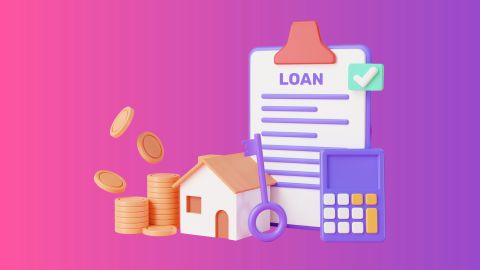Whether you’re an attorney, realtor, or someone looking to buy or sell real estate, you’ve likely encountered the term ‘conveyance.’ A conveyance deed is a legal document that confirms there is no pending debt on a property. Often referred to as a real estate conveyance instrument, it serves as proof of the transfer of property ownership from one individual to another at an agreed price.
In the context of acquiring property through home loans, a conveyance deed holds paramount importance. While home loans facilitate the purchase of property, the conveyance deed solidifies the legal transfer of ownership from the seller to the buyer. Understanding the definition, purpose, and key elements of a conveyance deed becomes crucial for individuals navigating the intricate process of securing a home loan and ensuring a smooth transition of property rights.
What is a conveyance deed?
A conveyance deed is a legal document that serves as proof of the transfer of ownership of a property from one party to another. This document is crucial in real estate transactions as it ensures the rightful ownership of the property is passed on legally and effectively. The conveyance deed meaning encompasses not only the transfer of title but also the protection of the buyer’s rights, ensuring they acquire a property free of any encumbrances or legal issues.
Key elements of a conveyance deed
A well-drafted conveyance deed includes several essential elements:
- Details of the parties involved: The names, addresses, and other identifying details of the seller (grantor) and the buyer (grantee).
- Property description: A comprehensive description of the transferred property, including its location, dimensions, and boundaries.
- Transfer clause: A clear statement indicating the intention to transfer ownership from the seller to the buyer.
- Consideration: The amount of money or other compensation exchanged for the property.
- Encumbrances: A declaration that the property is free from any encumbrances, mortgages, or claims.
- Warranties: Assurances provided by the seller about the property, ensuring there are no legal defects or disputes.
- Signature and witnesses: The deed must be signed by both parties and witnessed by independent parties to ensure its legality.
- Delivery and acceptance: The physical handing over of the deed and the acceptance by the buyer, signifying the completion of the transaction.
The importance of a conveyance deed
A conveyance deed is crucial for several reasons:
- Legal proof of ownership: It serves as an official record that the buyer has legally acquired the property.
- Dispute resolution: In case of ownership disputes, the conveyance deed is a key document used in legal proceedings.
- Protection of rights: It protects the buyer from potential fraud, ensuring they receive property free from legal complications.
- Facilitation of transactions: The clear and detailed nature of a conveyance deed facilitates smooth property transactions, providing clarity and security to both parties involved.
Steps involved in drafting a conveyance deed
The process of drafting a conveyance deed typically involves the following steps:
- Preparation: gathering all necessary information, including details about the property and the parties involved.
- Drafting: creating the initial draft of the deed, ensuring all key elements are included.
- Review: Both parties review the draft to ensure accuracy and completeness.
- Legal verification: Consult with legal experts to verify the deed complies with all legal requirements.
- Stamping and registration: paying the applicable stamp duty and registering the deed with the local land registry to make it legally binding.
- Execution: signing the deed in the presence of witnesses.
- Delivery and acceptance: Handing over the deed to the buyer and obtaining their acceptance.
Documents required for conveyance deeds
To execute a conveyance deed, several documents are typically required. These include:
- Sale deed/agreement to sell: The primary document proving the sale agreement between the buyer and seller.
- Property card: Reflects the ownership history and land details.
- Property tax receipts: Proof that all taxes have been paid up to date.
- Occupancy certificate: Confirms that the property is fit for occupancy.
- NOC from society/builder: No Objection Certificate from the housing society or builder.
- Building plan approvals: Sanctioned building plans by the local authority.
Ensure all documents are accurate to avoid legal issues.
Sale agreement terms
Before a conveyance deed is executed, a sale agreement is often drawn up. This document outlines the terms and conditions of the sale, including:
- Purchase price: The agreed-upon amount to be paid for the property.
- Payment terms: Details on how and when the payment will be made.
- Possession date: The date on which the buyer will take possession of the property.
- Contingencies: Conditions that must be met for the sale to proceed, such as obtaining financing or a satisfactory inspection of the property.
- Default clause: provisions detailing the consequences if either party fails to fulfil their obligations.
The sale agreement acts as a precursor to the conveyance deed, ensuring both parties are in agreement on the terms before the legal transfer of ownership.
Types of conveyance deeds
Here are the types of conveyance deeds:
- Sale deed: Transfers property ownership from the seller to the buyer in exchange for payment.
- Gift deed: Used when property is transferred as a gift without monetary consideration.
- Lease deed: Transfers property rights to a lessee for a specific period in exchange for rent.
- Mortgage deed: Used when a property is pledged as security for a loan.
- Exchange deed: Facilitates the exchange of properties between two parties.
- Relinquishment deed: Transfers one co-owner's share of the property to another co-owner.
What to do if the conveyance deed is lost?
1. File a police report: File a First Information Report (FIR) as soon as possible. The FIR should state that the property papers have been lost, misplaced, or stolen.
2. Publish a newspaper advertisement: Place an advertisement in a local or regional newspaper. Include details of the lost documents and your contact information.
3. Prepare an affidavit: Create a sworn statement that confirms the loss of the original document and the need for a duplicate. Include all the necessary property details and FIR information.
4. Request a certified copy: If the property was already transferred to the buyer's name, you can request a certified copy of the deed from the registry of deeds.
Difference between a conveyance deed and registry
Aspect |
Conveyance deed |
Registry |
Definition |
A legal document that confirms the transfer of ownership of a property from one party to another. |
The official recording of the property transaction with the government authority. |
Purpose |
To legally transfer the title and ownership rights of the property. |
To document the property transaction in government records for future reference. |
Legal requirement |
Mandatory for transferring ownership of immovable property. |
Mandatory for validating the property transaction under the Registration Act, 1908. |
Scope |
Includes details of the transfer, such as parties involved, price, and terms. |
Confirms the transaction details and records them in the government registry. |
Authority |
Prepared and executed by the buyer and seller, usually with legal assistance. |
Registered with the sub-registrar's office for official acknowledgment. |
Proof of ownership |
Acts as proof of ownership and transfer of property rights. |
Serves as a legal record but does not transfer ownership on its own. |
Legal binding |
Becomes legally binding once signed and executed by both parties. |
Gains validity only after proper registration with the sub-registrar. |
Significance |
Protects the buyer’s rights and ensures the property is free of encumbrances. |
Ensures transparency and provides an official record of the property transaction. |
Explore Bajaj Housing Finance Home Loan
In the process of acquiring properties, home loans are often essential, bridging the financial gap for prospective buyers. Bajaj Housing Finance Home Loan is designed to meet diverse needs, ensuring both accessibility and affordability. Here are a few benefits of choosing a home loan from Bajaj Housing Finance:
- Competitive interest rates: Benefit from home loans featuring competitive interest rates on home loan, beginning at 7.49%* p.a., ensuring affordability and manageability throughout your loan tenure.
- Top-up loan facility: Access additional funds with our top-up loan facility, allowing you to secure extra finances of Rs. 1 crore* or higher, through our home loan balance transfer option. Utilise this surplus funding for home renovations, repairs, or expansions.
- Convenient repayment options: Enjoy the flexibility of extended repayment tenures of up to 32 years, enabling you to select a repayment plan that aligns with your financial situation. This convenience empowers you to effectively prioritise your loan repayment.
- Tailored loan solutions: Personalise your home loan to match your specific needs with our flexible options. Customise your loan amount and repayment tenure, empowering you to attain homeownership on your terms.
Visit the Bajaj Finserv website to apply for a home loan today.




